![]()
Hello again! In the second post for today I want to give you some Basic Introduction to the Software by National Instruments called Multisim that I will use for the implemenation of Logical Circuits! You can download the software from here. I will explain some things about the Interface and where we find all of our Gates, Circuits and other things. I will show you the basics of getting started! So, let's start out!
Interface:

The Interface is split into 3 Regions. The Biggest Region is the Center where we create our Circuit. On Top we have a Toolbar, where we will get our Gates, Circuits etc. and start out Simulation. In the right side we have useful devices for our simulation (like multimeters, oscilloscopes etc.)
So, the Oscilloscope that we will use for testing purposes is somewhere in the right side!

Getting and placing Components:
To get Components we go to Place/Component on the Toolbar.
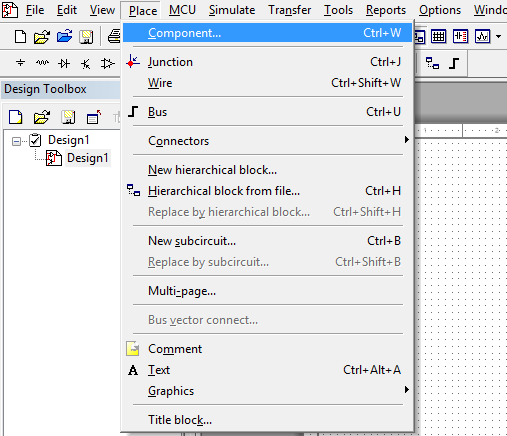
This will open this Window that contains all of the Gates, Circuits and other useful things any Circuit will need!
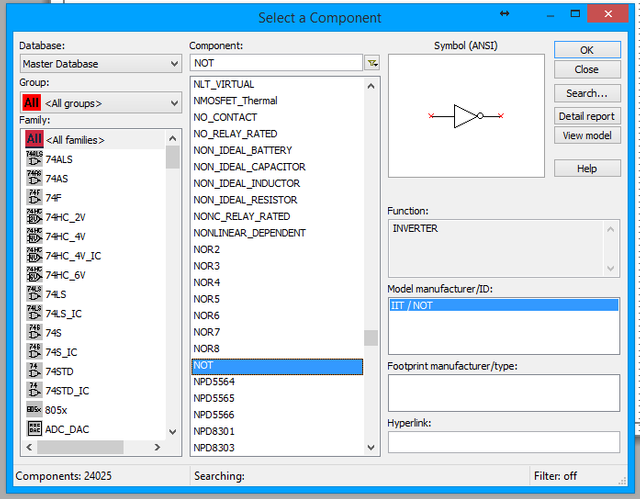
Components:
The Components that we will use are the in specific Categories on the left. I will tell you now where you can find all of those that we will use!
Our Power Sources, Grounds, Clocks etc. will be found in the Category Sources
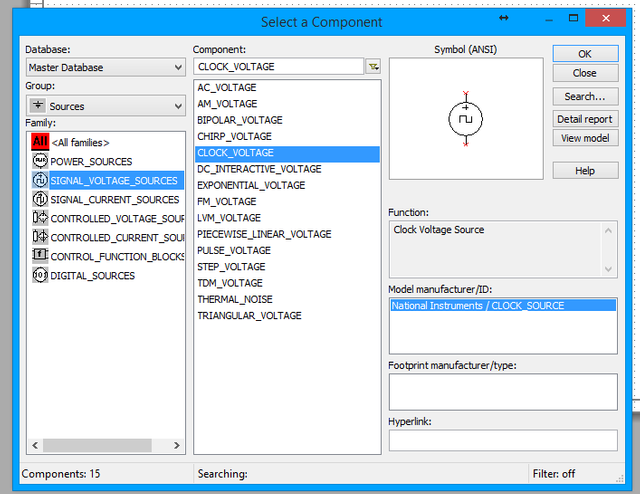
Our Switches will be found in Basic/Switches
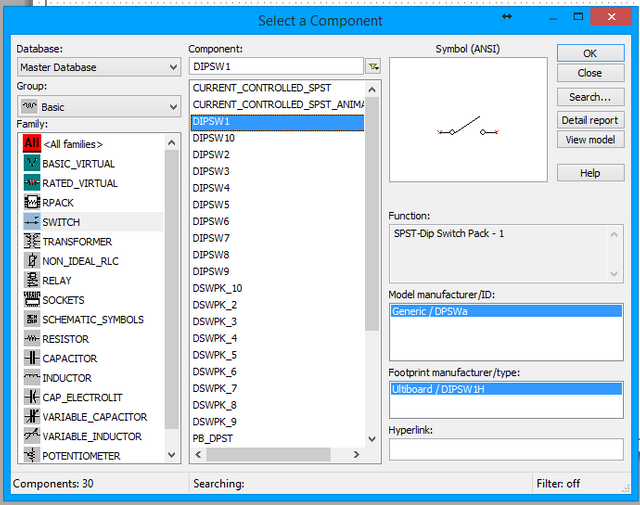
Our Probes will be found in Indicators/Probe
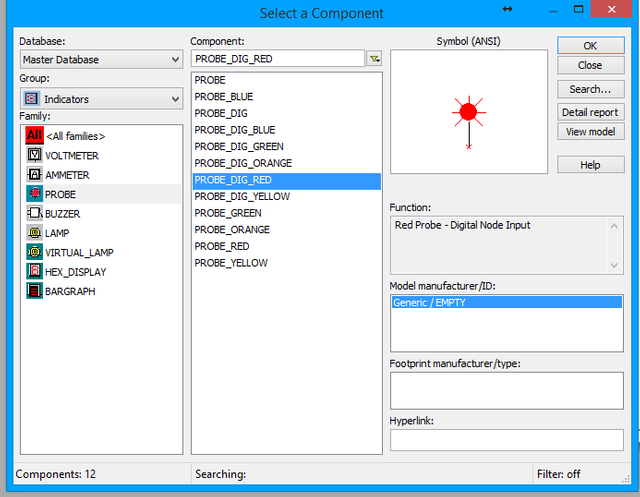
Last but not least, Gates and Circuits will be found in TTL or Misc Digital/TIL. I prefer using the ones from Misc Digital, cause they have names and TTL ones have Codes
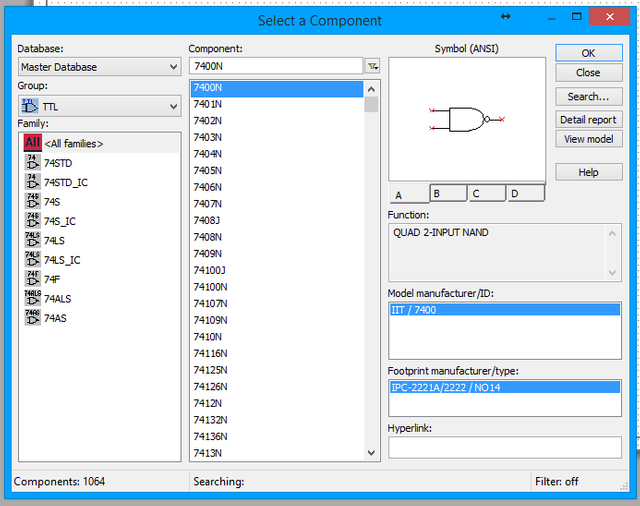
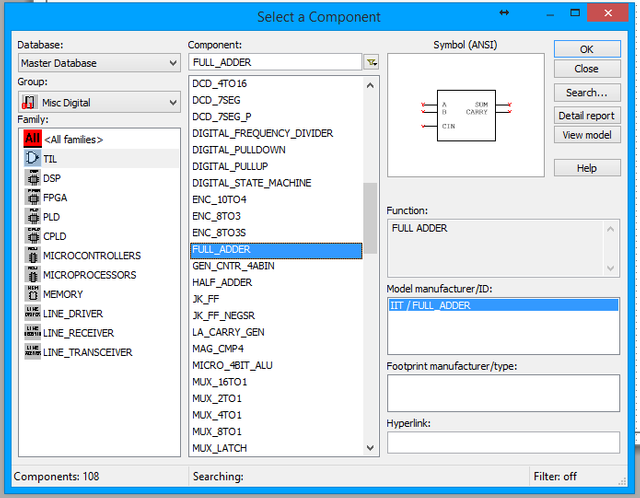
Basics of creating a Circuit:
Now lastly we will get into the Basics of creating a Circuit.
- Remember to always have some kind of energy source (clock or constant like VCC)
- Some Sources need to be Grounded and you should not forget a ground (VCC doesn't need a ground, but clocks do!)
- Switches are great for changing Inputs so use them (an exception is when you have a clock and test all input combinations automatically)
- Don't forget Probes! They show you the Output/Value of the Circuit or a specific Line/Cable and are great for testing
- Always use Gates/Circuits from the same family, cause sometimes they might be uncompatible!
- The Oscilloscope is also great for testing! So put it always in Sequential Circuits to know the clock voltage and sometimes even in Combination Circuits to have a better idea of your Input/Output values!
- Some Components have Properties that can be tweaked (like Frequency and Voltage for Clocks, Key Buttons for Switches etc) so open them to see if you can make some change that helps your testing
A Simple Continous Energy Source Circuit that uses a VCC and Switches for each Input look like this:
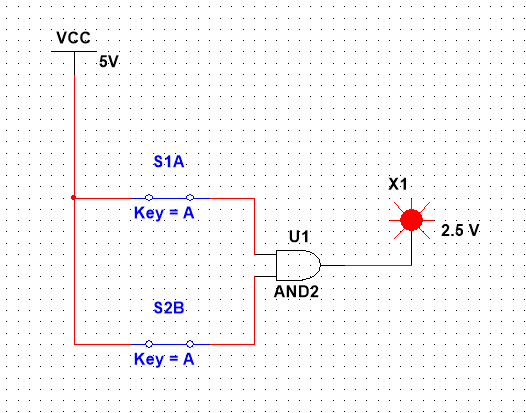
Else, we can put Clocks with Frequencys that are half, double etc. so that we end up with all Inputs Combinations! A Oscilloscope is pretty useful too, so that we see the voltages of those Inputs!

This is the end of this post! Hope you learned something new or refreshed your knowledge!
Next time I will implement some Gates that we talked about in Basic Logic Gates, Universal Logic Gates and Multi-Input Gates, to proof the Truth Tables and for you to understand the Implementation better!
Bye!
Congratulations @drifter1! You have completed some achievement on Steemit and have been rewarded with new badge(s) :
Click on any badge to view your own Board of Honor on SteemitBoard.
For more information about SteemitBoard, click here
If you no longer want to receive notifications, reply to this comment with the word
STOPDownvoting a post can decrease pending rewards and make it less visible. Common reasons:
Submit